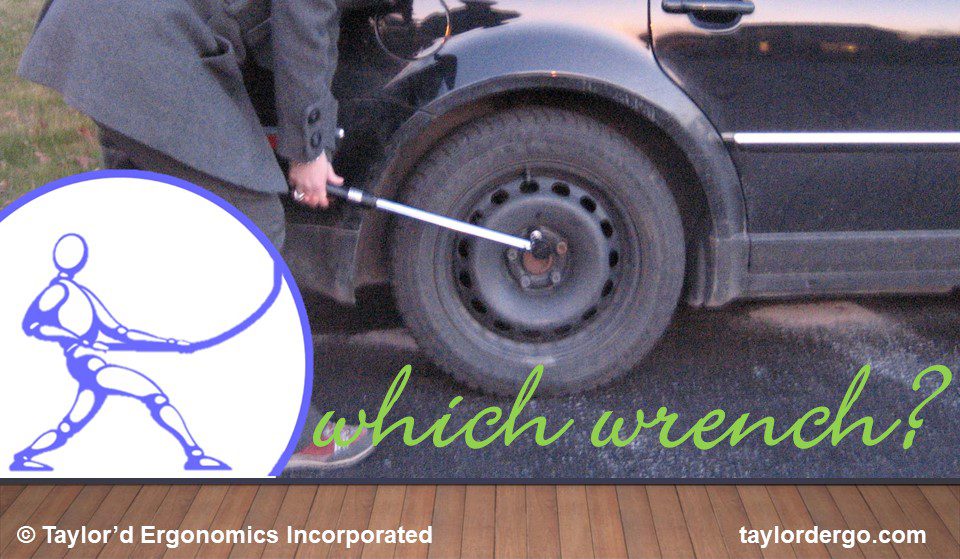If you’re having trouble loosening the lug nuts on your summer tires, a longer wrench will give you an advantage. The physics behind the “lever” wasn’t exciting in 6th grade, and surely would not compel you to read this article. However, the “longer wrench” solution is so effective that it’s tempting to simply use the longest wrench available, all the time.
And yet….if you use a long wrench to remove the lug nuts from your summer tires, and then you install your snow tires with the same wrench, you’ll need an even longer wrench in the spring!
Ideally, we should tighten fittings with just a little more effort than what is needed to secure them. Not a lot more. Definitely not “as hard as you can”. But it’s human nature to tighten fasteners as tight as we can. We all do it. If tight is good, then tighter must be better. The thing is, when I pull on an 18″ wrench as hard as I can, I will need a 20″ wrench to remove it easily. When my buddy, who is stronger than me, uses an 18″ wrench to tighten a fitting, I might need a 24″ wrench to loosen it, even with my maximum effort.
A few years back, we were hired to develop training for workers who used wrenches all day long. As we collected field data and ran pilot sessions, we talked to a lot of experienced workers. One story stood out to me. A senior employee, let’s call him “John”, told me that he had experienced serious shoulder pain throughout his entire career. Tightly-torqued fittings were a source of pride for John and his experienced co-workers, and shoulder and back pain were considered a rite of passage. John confided that his perspective changed when his granddaughter started working in his trade. Suddenly, he realised that his strong work ethic (pun intended) could contribute to career-limiting injury hazards for his granddaughter.
One of the main objectives of the training that we developed was to ensure that fasteners were tightened enough to be secure, but not so tight that they would create a hazard during removal. When training participants measured how much force they were actually applying to the wrench, many were surprised to learn that they used two or three times the required effort. It’s no surprise that they were having trouble removing fittings, years after installation!
There’s a lot to be said for Einstein’s method of choosing the simplest solution that works. I love solutions that involve simple machines such as levers, ramps, wheels, and wedges. Keep an eye out for opportunities to increase leverage, or use gravity to feed items toward operators. But make sure you consider the future consequences, where disassembly might be required.
Here are a few wrenching guidelines:
- Ask how tight a fitting really needs to be – someone ought to know this! Then measure the force that you are applying. (A fish scale might work, or we can use our gauges to help with this.) Do not overtighten!
- Routinely use a short wrench to tighten a fitting, and a long wrench to remove it.
- If you must use a long wrench to tighten a fitting more easily, ask if it will be possible to use a power tool to remove it.
- Consider using a torque wrench, which signals when the desired setting is achieved, to avoid overtightening.


